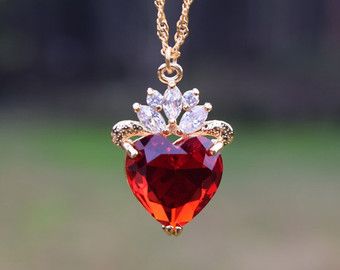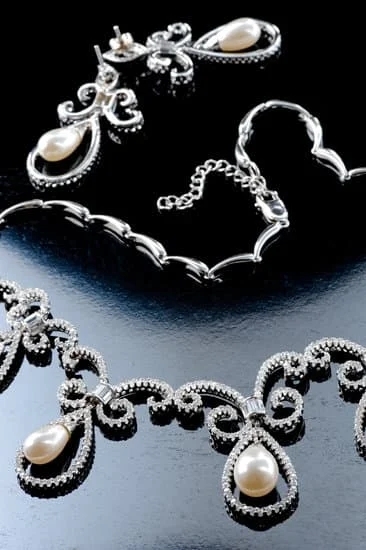The history of jewelry design has always been intertwined with the rich tapestry of human civilization. From the earliest adornments crafted by ancient civilizations to the modern innovations in contemporary jewelry, the evolution of jewelry design reflects the cultural, artistic, and societal changes that have occurred throughout history.
Dating back to ancient times, jewelry has been a symbol of status, wealth, and personal expression. As we explore the origins of jewelry, we gain insight into the craftsmanship and materials used by our ancestors, as well as the significance and meaning behind these early designs.
In this article, we will embark on a journey through time to uncover the intricate history of jewelry design. We will delve into the ancient origins of jewelry, trace its evolution through different materials and design movements, and examine iconic pieces that have left an indelible mark on history. Join us as we unravel the enduring legacy of jewelry design through the ages.
Ancient Jewelry
The history of jewelry design dates back to ancient times, where early civilizations utilized natural materials to create adornments for the body. From simple shells and beads to intricate metalwork, ancient jewelry provides a fascinating look into the artistic and cultural traditions of our ancestors.
1. Early Materials: Ancient jewelry was crafted from a variety of materials, including shells, bones, and stones. These raw materials were often shaped and polished to create simple yet elegant designs that reflected the natural world.
2. Symbolism and Meaning: In ancient societies, jewelry held great symbolic significance and was used as a means of communication. From amulets believed to protect against evil spirits to ceremonial adornments denoting social status, these early designs carried deep cultural meanings.
3. Techniques and Artistry: The craftsmanship involved in creating ancient jewelry was highly skilled, with artisans using techniques such as weaving, carving, and metalworking to produce intricate pieces. These early designs laid the foundation for the evolution of jewelry craftsmanship throughout history.
The history of jewelry design is rich with centuries of tradition and innovation, shaping the way we perceive beauty and adornment. By exploring the earliest designs from ancient civilizations, we gain a deeper understanding of the cultural significance and artistic expression that has been woven into every piece of jewelry throughout history.
Evolution of Jewelry Materials
When examining the history of jewelry design, it’s fascinating to see how the materials used have evolved over time. From the early use of shells, bones, and stones by ancient civilizations to the refinement of metals such as gold, silver, and platinum, the evolution of jewelry materials has been a significant factor in shaping design trends.
In ancient times, jewelry was crafted using whatever natural resources were available. For example, ancient Egyptians used shells, semi-precious stones, and animal bones to create intricate jewelry pieces. The use of these materials not only served as decorative adornments but also held cultural and religious significance within these societies.
As civilizations progressed and metalworking techniques advanced, the use of metals in jewelry became more prevalent. Gold quickly emerged as one of the most prized materials due to its rarity and lustrous beauty. The ancient Greeks and Romans were known for their exquisite gold jewelry designs, often incorporating gemstones and intricate details.
The evolution of jewelry materials reflects not only changes in aesthetic preferences but also advancements in technology and trade. As societies interacted and traded with one another, new materials became available, leading to further innovation in design. This ongoing evolution continues to influence contemporary jewelry design, with designers exploring a wide range of materials and techniques to create unique pieces that reflect both tradition and modernity.
| Evolution of Jewelry Materials | From Shells to Gold |
|---|---|
| Ancient Egyptians used shells, semi-precious stones, and animal bones | Ancient Greeks and Romans used gold for intricate designs |
| Advancements in technology and trade led to new material availability | Contemporary designers explore a wide range of materials for unique pieces |
The Renaissance
During the Renaissance, advancements in technology and trade led to an increased availability of gemstones and precious metals. This allowed for greater creativity and experimentation in jewelry design. Jewelers began to incorporate intricate details such as enamel work, filigree, and delicate metalwork into their pieces, creating stunning works of art that were highly prized by the wealthy elite.
One iconic style that emerged during the Renaissance was the use of symbolic motifs in jewelry design. Pieces often featured symbols such as hearts, flowers, animals, and mythological creatures, each holding deeper meanings and significance. Jewelry became not only a fashion statement but also a way for individuals to express their personal beliefs and ideologies.
The influence of the Renaissance on jewelry design can still be seen today, with many contemporary designers drawing inspiration from the intricate designs and symbolic motifs of this period. The enduring legacy of the Renaissance period continues to inspire new generations of jewelry artists to create pieces that are both visually stunning and rich with historical significance.
Art Nouveau and Art Deco
During the late 19th century and early 20th century, two influential art movements, Art Nouveau and Art Deco, had a significant impact on the world of jewelry design. These movements brought about new styles, techniques, and materials that transformed the way jewelry was perceived and created.
Art Nouveau: Nature-Inspired Elegance
Art Nouveau emerged as a reaction to the academic art of the 19th century, drawing inspiration from natural forms such as flowers, plants, and flowing lines. Jewelry designs in this period were characterized by their organic and asymmetrical shapes, incorporating elements like enameling, mosaics, and colorful gemstones. Renowned jewelers such as René Lalique and Georges Fouquet played a crucial role in popularizing this style with their innovative use of materials and intricate craftsmanship.
Art Deco: Symmetry and Modernity
In contrast to the whimsical nature of Art Nouveau, Art Deco embraced geometric patterns, sleek lines, and a sense of modernity. This movement was influenced by technological advancements and global events such as the discovery of King Tutankhamun’s tomb, resulting in designs that incorporated Egyptian motifs, bold colors, and a focus on luxury. Jewelry from this era often featured diamonds, platinum, and other precious metals in strikingly symmetrical arrangements.
The influence of these design movements on jewelry continues to resonate in contemporary pieces. Art Nouveau’s emphasis on fluidity and natural motifs can be seen in modern jewelry inspired by nature, while the geometric sophistication of Art Deco still inspires designers to create pieces that exude elegance and glamour. The legacy of these movements serves as a testament to the enduring creativity and innovation within the history of jewelry design.
Iconic Jewelry Pieces Throughout History
Throughout history, jewelry has held significant cultural and historical value, often symbolizing wealth, power, and status. From the opulent jewels of ancient civilizations to the iconic pieces worn by prominent figures, the history of jewelry design is rich and diverse.
Ancient Treasures
One of the earliest examples of iconic jewelry pieces is found in the treasures of ancient civilizations such as Egypt, Mesopotamia, Greece, and Rome. The elaborate jewelry worn by pharaohs, queens, and warriors served not only as decorative adornments but also as symbols of social standing and religious significance.
Cleopatra, known for her legendary beauty and charisma, was often depicted wearing intricate jewelry made of gold, precious stones, and colorful gemstones. These artifacts provide invaluable insights into the craftsmanship and artistic expression of ancient jewelry design.
Royal Heirlooms
The history of iconic jewelry pieces extends to royal families who have passed down exquisite heirlooms from generation to generation. One notable example is Princess Diana’s engagement ring, which features a stunning sapphire surrounded by dazzling diamonds.
This particular piece gained widespread attention due to its connection to the British royal family and its association with a beloved public figure. From crowns to tiaras, these royal jewels continue to captivate people’s imaginations with their timeless elegance and historical significance.
Legendary Gems
In addition to royalty, legendary gems like the Hope Diamond and the Koh-i-Noor diamond have become renowned for their exceptional beauty and fascinating stories. These illustrious stones have traveled through history, changing hands from monarchs to collectors, each carrying its own mystique and allure. The stories behind these gems further emphasize the enduring legacy of iconic jewelry pieces throughout history.
Modern Twists
In the modern era, jewelry design has continued to evolve, with contemporary trends and innovations shaping the way we perceive and wear jewelry. With advancements in technology and the use of unconventional materials, designers are pushing the boundaries of traditional jewelry making to create pieces that are not only visually striking but also environmentally sustainable.
One notable trend in modern jewelry design is the emphasis on ethical sourcing and sustainable practices. As consumers become more conscious of the impact of their purchases, there is a growing demand for ethically sourced gemstones and recycled metals. Many designers are embracing this trend by partnering with responsible mining initiatives and incorporating eco-friendly practices into their production processes.
Another contemporary innovation in jewelry design is the integration of technology into traditional pieces. From smart jewelry that tracks health metrics to 3D-printed designs, technology has opened up new possibilities for creating personalized and functional pieces. This marriage of tradition and innovation is reshaping the industry and attracting a new generation of consumers who seek both style and utility in their accessories.
Moreover, minimalist and versatile designs have risen in popularity, reflecting a shift towards timeless elegance and practicality. Sleek geometric shapes, clean lines, and modular pieces allow for greater flexibility in styling, catering to individuals with diverse tastes and lifestyles. These modern twists in jewelry design demonstrate how the art form continues to adapt to changing societal values while preserving its rich history.
| Contemporary Trends | Innovations |
|---|---|
| Emphasis on ethical sourcing | Technology integration |
| Sustainable practices | Minimalist designs |
| Eco-friendly materials | Versatile pieces |
Conclusion
In conclusion, the history of jewelry design is a fascinating journey through time that showcases the creativity, craftsmanship, and cultural significance of adornment. From the early use of shells and stones to the elaborate gold and gemstone pieces of ancient civilizations, jewelry has played a significant role in human expression and identity.
Throughout the Renaissance period, there was a flourishing of innovative designs that integrated art and culture, setting the stage for the influence of design movements such as Art Nouveau and Art Deco on jewelry.
The enduring legacy of jewelry design is evident in iconic pieces that have captured the imagination and admiration of people for centuries. From Cleopatra’s dazzling jewels to Princess Diana’s iconic sapphire engagement ring, these pieces serve as timeless symbols of beauty and elegance. Today, contemporary trends and innovations continue to shape the landscape of jewelry design, reflecting modern sensibilities while honoring age-old techniques and traditions.
As we look back at the history of jewelry design, it becomes clear that this art form has not only evolved with changes in materials, style, and technology but has also remained a cherished form of personal expression and cultural significance. The allure and timeless appeal of jewelry will continue to captivate generations to come as it carries on its rich legacy through the ages.
Frequently Asked Questions
What Is the History of Jewelry?
The history of jewelry dates back to ancient times, with evidence of jewelry-making found in various archaeological sites around the world. Jewelry has been used as a form of personal adornment, status symbol, and religious or cultural significance.
Who First Started Wearing Jewelry?
The practice of wearing jewelry is believed to have started with early humans who adorned themselves with natural materials such as feathers, bones, shells, and stones. As societies advanced, jewelry-making techniques evolved, leading to the creation of more intricate and precious pieces.
What Is the Earliest Known Piece of Jewelry?
The earliest known piece of jewelry is a set of beads made from Nassarius shells that were discovered in Israel and estimated to be around 100,000 years old. These beads are believed to have been worn as a necklace or bracelet and demonstrate the early human desire for personal adornment and decoration.

Welcome to my jewelry blog! My name is Sarah and I am the owner of this blog.
I love making jewelry and sharing my creations with others.
So whether you’re someone who loves wearing jewelry yourself or simply enjoys learning about it, be sure to check out my blog for insightful posts on everything related to this exciting topic!





